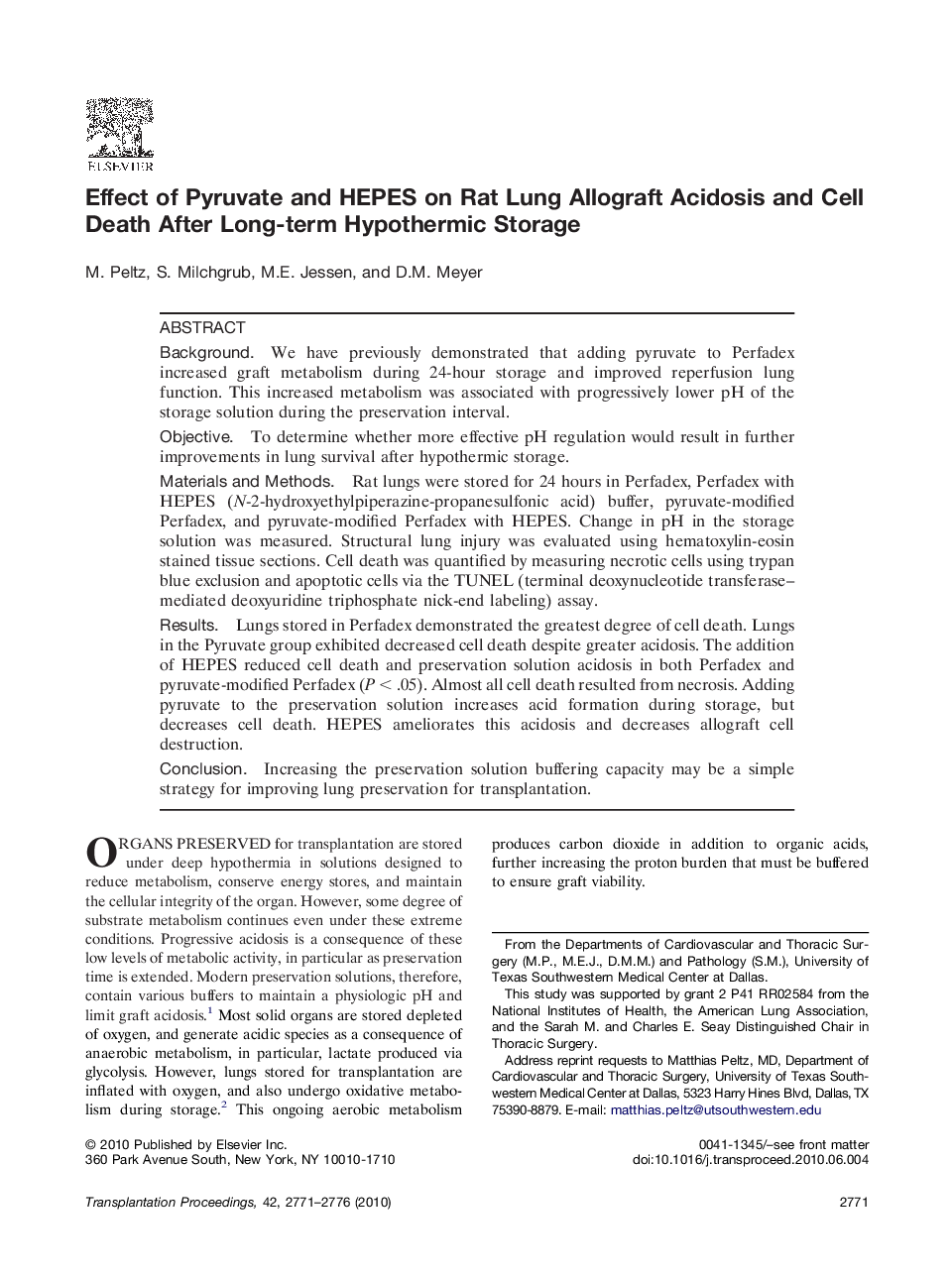| Article ID | Journal | Published Year | Pages | File Type |
|---|---|---|---|---|
| 4259478 | Transplantation Proceedings | 2010 | 6 Pages |
BackgroundWe have previously demonstrated that adding pyruvate to Perfadex increased graft metabolism during 24-hour storage and improved reperfusion lung function. This increased metabolism was associated with progressively lower pH of the storage solution during the preservation interval.ObjectiveTo determine whether more effective pH regulation would result in further improvements in lung survival after hypothermic storage.Materials and MethodsRat lungs were stored for 24 hours in Perfadex, Perfadex with HEPES (N-2-hydroxyethylpiperazine-propanesulfonic acid) buffer, pyruvate-modified Perfadex, and pyruvate-modified Perfadex with HEPES. Change in pH in the storage solution was measured. Structural lung injury was evaluated using hematoxylin-eosin stained tissue sections. Cell death was quantified by measuring necrotic cells using trypan blue exclusion and apoptotic cells via the TUNEL (terminal deoxynucleotide transferase–mediated deoxyuridine triphosphate nick-end labeling) assay.ResultsLungs stored in Perfadex demonstrated the greatest degree of cell death. Lungs in the Pyruvate group exhibited decreased cell death despite greater acidosis. The addition of HEPES reduced cell death and preservation solution acidosis in both Perfadex and pyruvate-modified Perfadex (P < .05). Almost all cell death resulted from necrosis. Adding pyruvate to the preservation solution increases acid formation during storage, but decreases cell death. HEPES ameliorates this acidosis and decreases allograft cell destruction.ConclusionIncreasing the preservation solution buffering capacity may be a simple strategy for improving lung preservation for transplantation.
